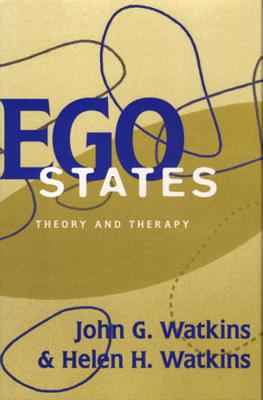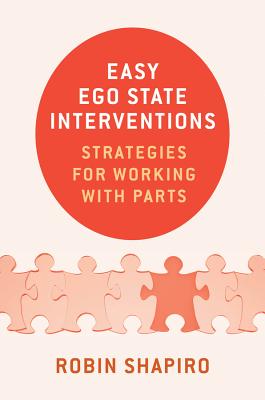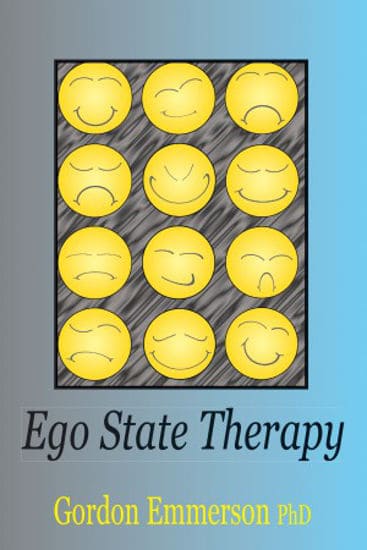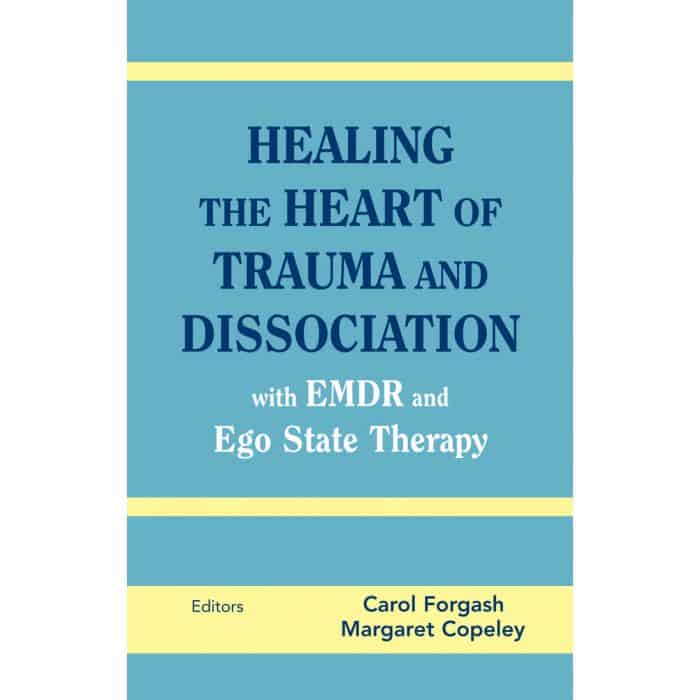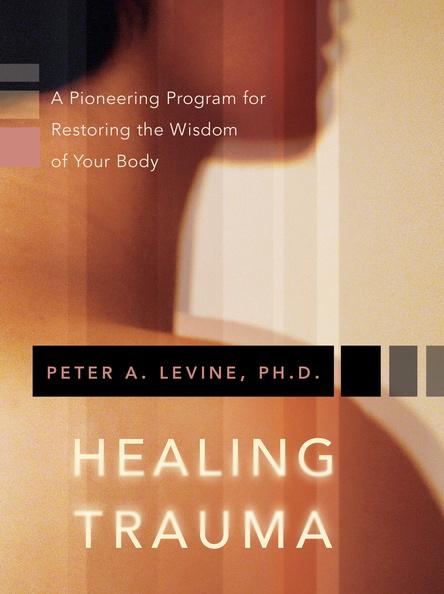Therapy
Ego-State Therapy: An Overview
THC Editorial Team September 22, 2021

Contents
- Overview
- What Is Ego-State Therapy?
- Conditions Commonly Treated by EST
- How Does EST Work?
- Benefits of EST
- The Effectiveness of EST
What Is Ego-State Therapy?
Ego-state therapy (often abbreviated EST) is a psychodynamic approach in which an individual’s psyche is considered to be an internal collection of distinct but integrated ego states, or a family of selves, that can be covert (difficult to witness or observe directly) or overt (directly observable).1 According to the tenets of this therapy, ego states are not innate; instead, people navigate many different roles and identities during their everyday lives and develop various ego states to adapt to different circumstances.1 For example, a woman might become a fierce protector of her children while also climbing the corporate ladder as a chief financial officer.
When ego states are in harmony, an individual’s personality is considered whole and expressed normally. However, some people’s ego states may fragment, potentially due to a traumatic event or interaction with a significant person, allowing one ego state to dominate.1,2 In extreme scenarios, as in dissociative identity disorder (DID), different ego states may be overt and express themselves as separate, nonintegrated personalities. Ego states may also become problematic when people find themselves stuck in a particular state or discover that a given state is no longer beneficial. For example, a survivor of child abuse might become stuck in a victim role as an adult, resulting in unhealthy relationships, anxiety, and other issues that stem from a dysfunctional ego state.
Ego-state therapists seek to identify an individual’s different ego states and integrate them into a coherent whole to help people resolve complex psychological challenges.3
Gordon Emmerson, a leading scholar on ego-state therapy, noted that one of its goals is to normalize dysfunctional ego states; he described four conditions of ego state:4
Vaded ego condition
Ego states in this condition have experienced trauma that hasn’t been processed.
Conflicted ego condition
Ego states in this condition clash with each other, resulting in internal conflict.
Retro ego condition
Ego states in this condition were once functional and do not cause harm; ideally, they should only appear when beneficial.
Normal ego condition
Ego states in this condition are healthy and not in conflict.
What Is the History of Ego-State Therapy?
The roots of ego-state therapy extend to the work of Paul Federn, a psychoanalyst and close associate of Sigmund Freud.1 According to Freud, a human personality is composed of three components: the id, the ego, and the superego.5 However, Federn proposed that personalities include many other components beyond these three parts, and he called them ego states.1 Federn discussed his concept of ego states with Edoardo Weiss, who is credited with being the founder of psychoanalysis in Italy. In the 1950s, Weiss extended Federn’s theories and concepts into clinical therapy practice.1
Weiss passed the torch to John and Helen Watkins, who developed this personality concept into ego-state therapy. Toward the end of the 20th century, they began to note the limitations of Federn’s research, in that he had only considered elements that were connected to the ego to be part of the ego state. They took the theoretical framework further to redefine ego states as “an organized system of behaviors and experiences whose elements are bound together by some common principle and separated from other such entities by a boundary which is more or less permeable.”1 The Watkinses subsequently researched, practiced, and presented their findings in books, articles, and workshops and developed what is now recognized as ego-state therapy.1
Other scholars who have contributed to the concept of ego states include psychoanalyst Roberto Assagioli, clinical psychiatrist and psychoanalyst Carl Jung, psychiatrist Eric Berne, and psychiatrist, psychoanalyst, and psychotherapist Frederick Perls.1
What Conditions Are Commonly Treated by Ego-State Therapy?
Ego-state therapy has been used to treat various psychological conditions, including depression and anxiety; however, practitioners primarily apply it to cases involving trauma or traumatic stress disorders, such as posttraumatic stress disorder (PTSD), combat stress injury, and acute stress disorder (ASD).3
Although traumatic stress and PTSD can affect people differently, they are hypothesized to result in weakened ego states generally and in an overall decline in functioning, including cognitive functioning.6 Ego-state therapy, therefore, aims to rehabilitate and strengthen the components of the self that have been affected by trauma.6
How Does Ego-State Therapy Work?
Ego-state therapists seek to help clients integrate their various ego states to communicate with one another rather than conflict. The therapist might use various psychotherapeutic tools, including aspects of family therapy, group therapy, and hypnosis, to activate and identify an individual’s ego states and then contact and communicate with them.3 Therapists do not challenge individual ego states during sessions; instead, they attempt to encourage a client’s different states to communicate with each other.7
Once a client’s ego states have been contacted, the therapist will assess the levels of conflict and cooperation between them. Therapists might then use behavioral, analytic, cognitive, or humanistic techniques to help resolve inner conflicts and integrate an individual’s various selves to improve their functioning as a whole.3
Ego-state interventions fall broadly into two categories: nonhypnotic and hypnotic.7
Nonhypnotic Access
A therapist can take several different approaches when opting not to use hypnotism to access ego states, usually due to the therapist’s or client’s lack of experience or comfort with hypnosis. One technique termed the empty chair technique involves placing two empty chairs in front of the client. The client is then asked to sit in the first chair to discuss, for example, only the positive aspects of a situation; the client would then be asked to discuss only the negative aspects of the situation when sitting in the second chair. Ego-state therapy hypothesizes that clients can channel a distinct, different ego state in each seat. This process serves to separate the ego states, who want different things, and let them communicate with one another. More chairs can be added if more ego states emerge.7
Another strategy is called the conversational technique. Once a client has exhibited two different ego states, the therapist speaks to the client in such a way that one of the ego states will become the “executive” or be brought to the forefront of their consciousness. The therapist can then interact with the ego states one at a time. The therapist can assist in the facilitation of the different ego states’ communication and negotiation.7
Hypnotic Access
Hypnotic access during ego-state therapy is thought to allow the client to access more repressed, invisible ego states that stem from past trauma. Though ego-state therapy is believed to be effective without hypnosis, this technique is thought to make it possible to access the full range of ego states. For example, it is possible that some childlike ego states—which may be able to provide valuable insight into a client’s thought processes or reactions—cannot be accessed and, therefore, cannot have their needs met without hypnosis. It is also possible that hypnosis can occur during a nonhypnotic intervention because of the intense focus that is required while accessing ego states. Though inadvertent, this spontaneous hypnosis can still provide access to more ego states.7
In most cases, hypnosis is used briefly instead of over a long period.8 Once the therapist is able to access the ego states and facilitate communication, the intervention is over. Ego-state therapists frequently combine this approach with other techniques to work with their clients’ ego states.
The Potential Benefits of Ego-State Therapy
Ego-state therapy might offer several benefits. For example, it gives both client and therapist a more thorough understanding of how the client’s personality is composed and, therefore, can help unearth the origins of their psychological distress. With ego-state therapy, clients can feel more empowered and gain an increased ability to manage their emotions. It can also help resolve internal conflict and improve internal communication.7 Ego-state therapy can help people develop healthy self-esteem.9 Lastly, people who have experienced trauma might also experience a reduction in trauma-related symptoms by processing the trauma they have experienced.7
Conditions Treated by Ego-State Therapy
Research studies have shown that ego-state therapy can improve the following conditions:
The Effectiveness of Ego-State Therapy
Ego-state therapy has shown itself to be an effective intervention to help people with numerous psychological conditions.
Ego-State Therapy and PTSD
Several studies have examined the efficacy of ego-state therapy in the treatment of PTSD. Because ego states are believed to most often develop due to traumatic experiences, and as coping mechanisms, this form of therapy has been used in research and applications for trauma-related conditions like PTSD.
A study conducted by researchers from Washington State University in 2013 compared people who received ego-state therapy to those in a placebo group, who received more traditional treatment for PTSD, which included event-recall exposure and desensitization. The researchers equally divided 30 participants who had been diagnosed with PTSD into two groups. In comparison to the placebo group, the participants who received ego-state therapy showed significant improvements in their symptoms at 1- and 3-month follow-ups and continued to show a further reduction in symptoms at a later checkpoint.3
A single-case study from 2013 combined ego-state therapy with eye movement desensitization and reprocessing (EMDR). The participant received 25.5 hr of treatment over 3 weeks, which integrated both EMDR and ego-state techniques. It is theorized that, when used alone, EMDR can accidentally trigger a hidden ego state that can emerge and experience disorientation in the present; because of this scenario, the ego state may act out violently or fearfully. It is believed that ego-state therapy combined with EMDR helps avoid this outcome by learning about and accessing the client’s ego states alongside the EMDR intervention.12
In this study, the 3 weeks of treatment were followed by 12 hr of supportive therapy over the subsequent 6 weeks. The client, who had been diagnosed with PTSD, generalized anxiety disorder, and depression, showed significant improvements. Prior to the intervention, the participant was severely depressed; afterward, their diagnosis was reduced to “mild mood disorder.” The client’s anxiety went from severe anxiety to moderate anxiety and their PTSD from severe PTSD symptoms to very few symptoms. The participant had further reduced symptoms at 6 months posttreatment.12
Another study, conducted in 2019 by researchers from Surabaya State University in Indonesia, evaluated ego-state therapy as a brief therapeutic intervention combined with cognitive-behavioral therapy to treat 45 people suffering from PTSD following natural disasters in Central Sulawesi, Indonesia. The researchers found that this combination of approaches was effective in reducing the participants’ trauma-related PTSD symptoms.13
Ego-State Therapy and Stress
Researchers from Padang State University in West Sumatra, Indonesia, conducted a recent study that looked at the efficacy of ego-state therapy in reducing performance-related stress among athletes. Six athletes who experienced high levels of stress that affected their performance received ego-state therapy. The researchers found that ego-state therapy might be an effective alternative treatment for performance-related stress through observation and administration of the Mini Stress Scale.11
Ego-State Therapy and Self-Esteem
In a 2008 case study written by Shirley McNeal, a clinical psychologist based in California, ego-state therapy was employed to treat low self-esteem and establish “healthy narcissism.” McNeal reported that the three study participants all experienced a passivity that disallowed them from setting boundaries and asking for what they wanted, and they did not believe that they deserved fulfillment in their lives. According to McNeal, ego-state therapy helped the participants to accept all of their ego states, mobilize helper ego states, express compassion for their vulnerable ego states, and reconceptualize the function of critical ego states. Furthermore, McNeal indicated that ego-state therapy empowered the participants to assert themselves in their lives better and increased both their self-esteem and healthy narcissism.9
Efficacy of Ego-State Therapy: Limitations of Research
Although several research studies have sought to examine the effectiveness of ego-state therapy, they were generally based on small sample sizes or were case studies. In addition, researchers have predominantly studied ego-state therapy in conjunction with other approaches, as ego-state therapy is usually brief. Therefore, further research is needed to ascertain the effectiveness of ego-state therapy in general and as a standalone approach.








